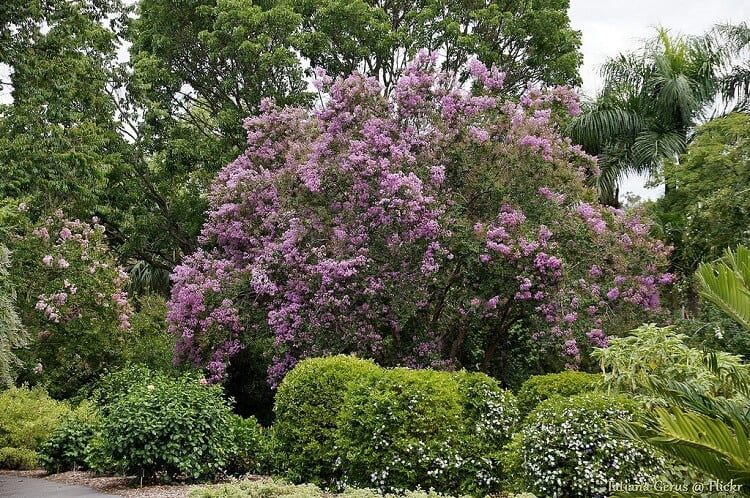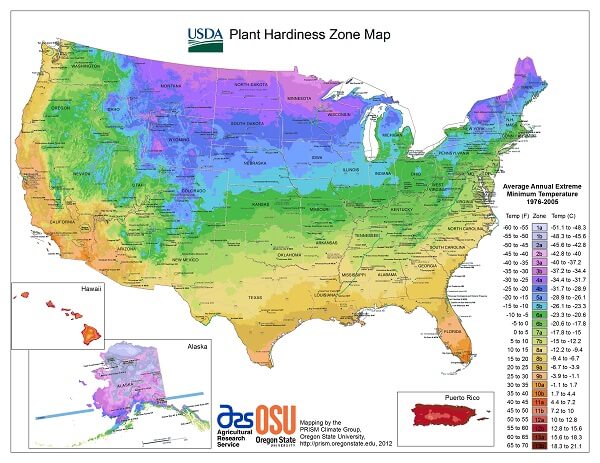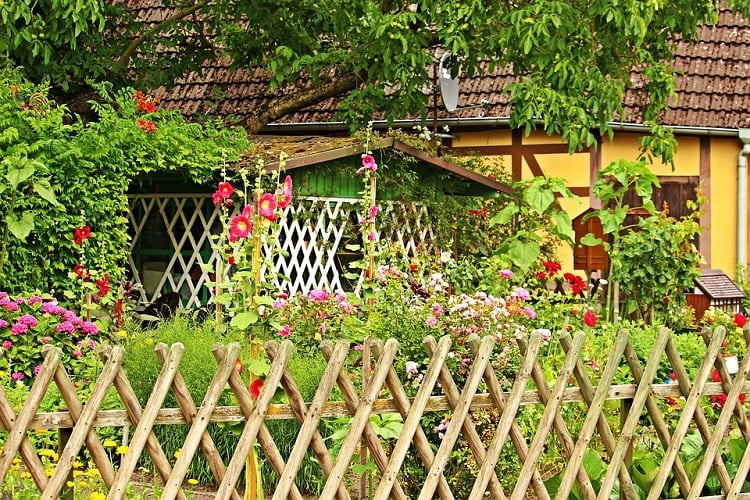What Are the Different Ways to Utilize the Crepe Myrtle Tree in Landscaping?
Looking to add visual appeal to your landscaping? There are various ways to landscape with crepe myrtle trees. These versatile beauties can be planted in rows to create stunning borders or as standalone specimens to bring height and color to your yard. Additionally, you can train them into unique shapes or espaliers for a truly eye-catching effect. Embrace the beauty of nature by exploring the multiple ways to landscape with Crepe Myrtle trees.
What Symbolism Does the Hawthorn Plant Have Compared to the Crape Myrtle Tree?
The hawthorn symbolism and planting tips reveal the significance of this plant in various cultures. Often associated with protection and purity, hawthorn is believed to ward off evil spirits. On the other hand, the crape myrtle tree represents beauty and grace in different contexts. Both hold symbolic value, but while the hawthorn emphasizes protection, the crape myrtle embodies elegance.
Getting to Know the Crape Myrtle Tree
Types of Crape Myrtle Shrubs
The crepe myrtle scientific name is Lagerstroemia, followed by the name of each variety in particular. Here you have some of the most often encountered crepe myrtle trees:- Japanese Crape Myrtle (Lagerstroemia fauriei) – can grow to 20-30 feet in height and width. The branches arch outward and it has light green leaves, which grow to 4 inches in length and 2 inches in width. The bark on this variety is especially beautiful. On the outside you can see a smooth gray one, revealing a glossy one beneath in a shade of cinnamon brown.
- Indica Crepe Myrtle ( indica) – This variety resists well in humidity, heat, and drought. It flourishes in most soils, but you have to drain them well. During severe winters, it can get frozen to the ground, but later it will resprout. However, if you live in an area with harsh weather, you should choose other selections that are cold-hardy (for example, Hopi, Centennial Spirit or Acoma). It presents dark green leaves that measure 1 – 2.5 inches long. They are usually red tinted but turn orange or red in autumn.
- Queen’s Crape Myrtle ( speciosa) – This tree can grow to 25-30 feet tall, as well as 15-25 feet wide. It’s perhaps the most tender of the crepe myrtles and also the showiest. The flowers are gorgeous. They come in lavender, white, pink or purple colors and they cluster together. The bark is exfoliating and it looks smooth. With it, it’s extremely important to do an annual pruning during winter in order to control the form and the size.
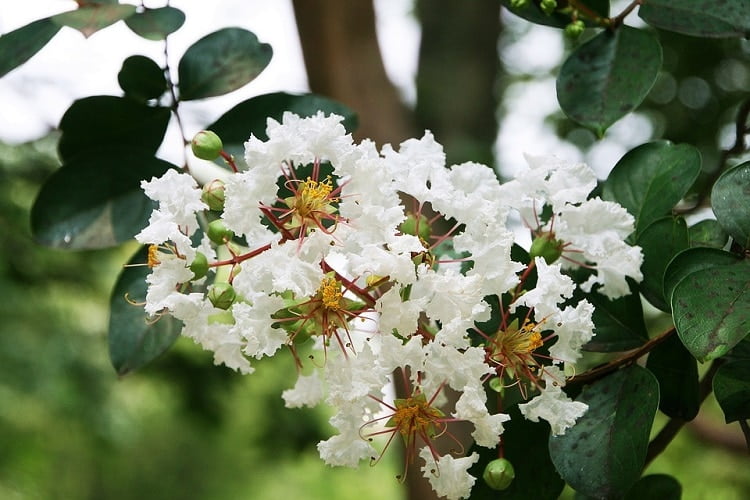
What Does It Look Like?
You may have seen it a hundred times, but you may not know it’s called like this. The crape myrtle tree, or Lagerstroemia, is a shrub or a small tree. It has various stems and the upper branches are arched. On the end of the branches, you will find big sprays of flowers, which are really beautiful. They can reach between 5 and 25 feet tall, according to the variety they belong to, the location or the pruning methods. You will recognize the bark because it has a grey-pink color and it is mottled. Newer forms can present some gray, brown or maroon shades. The leaves measure 4 inches in length and 2 inches in width. They have a glossy appearance and fine edges. In the summer, they have a green color, while in the fall they become red or yellow. The flowers initially were only lavender-pink, but with the help of breeders, now we have lots of varieties. From bright pink to purple, white, lavender or bright red, you can have a crape myrtle tree in almost any shade. The flowers measure 1-2 inches across and present many petals, which are gathered together into large heads. The heads can measure up to 14 inches in length.How to Plant a Crape Myrtle Tree
In the US, you will find most varieties starting with Virginia through the South, from Texas to California and up the West Coast. They prefer sunny locations and they can adapt to most types of soils. They don’t like soggy soils or having too much water. This characteristic they have makes them perfect for a xeriscaping design. Another part you have to consider when learning how to plant a tree is the sun. Crapes usually love having a lot of sunlight. You can plant them in the shade as well, but they will not flower as much. Moreover, they might be more prone to diseases. You should plant the crape myrtle shrub no deeper than the containers they come in. Make sure you don’t cover the roots with lots of soil. Dig a hole that is 2-3 times wider than the container, but no deeper than that. Place the plant in the soil and set it well. Use enough water, since they will need that in the beginning. In the first season, water the plant once a week. The roots will spread out, and then you will only need to water it when there are long dry periods. It’s important not to spray the leaves with water in the summer since this will make the plant prone to diseases. Remember to also apply some mulch, between 3” and 5” around the base.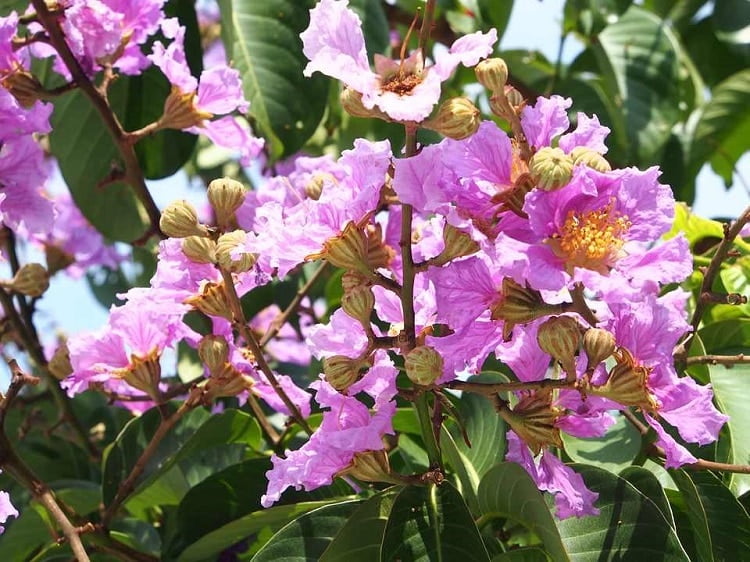
Growing Myrtle Trees
Climate – The only climate in the US that does not allow for growing crape trees is the colder one in the north. Other than that, feel free to grow them if you want to. In the hardiness zones between 6 to 10. However, in zone 6 most likely they will die back to the ground when winter comes. Light – You will get the best results with the crape tree flowers if you keep them in full sun. They need to be exposed to light at least 6 hours every day. Water – Usually, crape myrtle leaves love humidity. Make sure they have lots of water in the beginning. However, after they grow a little, they will be able to tolerate drought. Soil – This type of plant grows well in almost any kind of soil. The main point here is to keep it well-drained. Ideally, the soil should have neutral or just a little bit acidic pH. Fertilizer – You should make sure you offer the crape myrtles one annual feeding. For that, you need to use a high-nitrogen or general-purpose fertilizer. Do that as soon as the leaves appear. If you intend to fertilize the plant twice, you should do it the second time 2 months later. It would be better to choose a slow fertilizer since this helps to prevent a fast sucker growth, However, too much fertilization can make the leaves grow excessively, so you’ll have fewer blooms.
How to Trim a Crape Myrtle Tree
All the crape myrtle blooms on new wood. You should do the pruning either in winter or in early spring. You have to remove the twiggy growth and the basal suckers on the larger shrubs and trees. Also, cut the crossing branches and those who grow towards the center of the plant. Gradually, take out the branches that are up to 4-5 feet high. This will expose the bark on the trees, which is really beautiful. During growing season, you should cut off the spent flowers so that you will allow for a lighter and second bloom. At the same time, you should prune the dwarf forms periodically. Remove the spent blossoms and thin out the twiggy growth.Pests and Other Diseases
There are various pests and diseases that can affect the crape myrtle tree.- Sooty mold – the cause for sooty mold is represented by the excretions of pests, for example, the aphids. If your plant gets this, then you should treat it with an appropriate insecticide.
- Powdery mildew – this is the most often encountered scourge for the crape myrtle tree. It appears mostly when there are hot and humid days and dewy, cool nights. A general fungicide should work for removing it.
- Leaf spot – Yet another common issue is the leaf spot. It consists of dark brown spots that appear on the leaves. After their appearance, the leaves turn yellow and then fall off. Again, a general fungicide should be perfect.
- Root rot – If you have a soil that is poorly drained, you could notice that your plant is affected by root rot.






